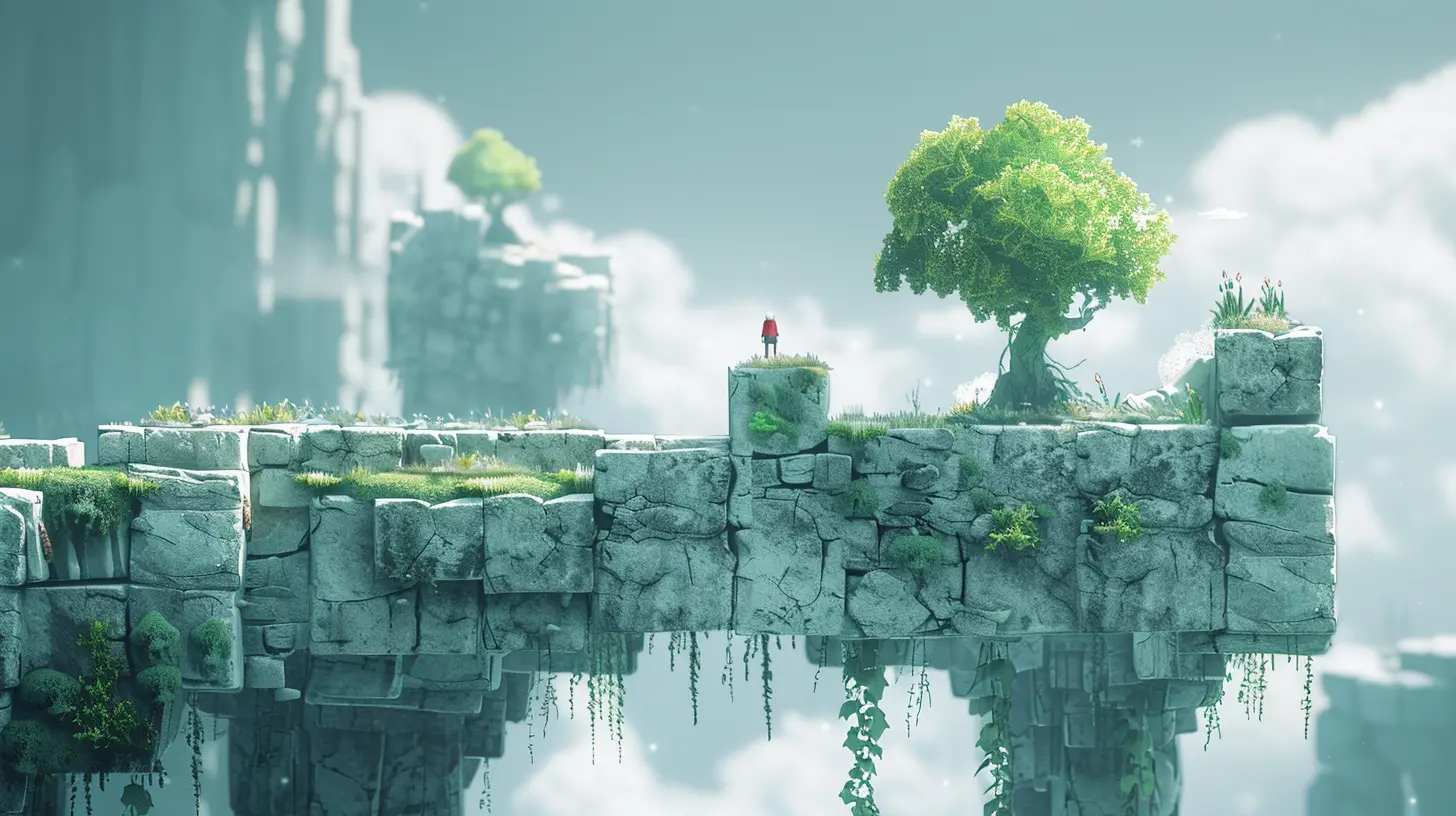Balancing Game Difficulty: Ensuring Accessibility Without Losing Depth
4 October 2025
Difficulty in video games has always been a hot topic, hasn’t it? Whether you're a seasoned player who thrives in punishing challenges or a casual gamer just looking to unwind after a long day, the balance of a game’s difficulty can make or break your experience. But here’s the million-dollar question: How do developers strike the perfect balance between accessibility for newcomers and depth for veterans? It’s tricky ground to tread, but when done right, it can elevate a game from “meh” to “masterpiece.” Let’s dive into the mechanics, decisions, and trade-offs that go into creating a balanced gaming experience.
The Great Difficulty Debate: Accessibility vs Depth
First off, why is this even a debate? Well, the gaming community isn’t exactly a one-size-fits-all type of crowd. Some players love punishing games like Dark Souls or Cuphead that demand absolute precision and patience. Others might prefer the laid-back vibe of Animal Crossing or the forgiving nature of Stardew Valley. The challenge arises when a game tries to cater to both sides of the spectrum. Too easy, and hardcore players feel bored or condescended to. Too hard, and casual players are left frustrated and alienated.It’s a delicate balancing act. Lean too far in one direction and you risk alienating a huge chunk of your audience. So how do developers manage to create games that feel accessible without watering down their complexity?
What Defines a Game’s Difficulty?
Before we go any further, let’s break down what we mean by "difficulty." It’s not always about how much damage an enemy deals or how quickly they react. Difficulty is more nuanced than that. Here are the core factors at play:1. Input Complexity
The complexity of controls matters a lot, especially for new players. For instance, fighting games like Tekken or Street Fighter involve learning intricate combos and split-second timing, which can turn off beginners. Games with simple controls but deep mechanics, like Celeste, often appeal to a broader audience because they’re easy to pick up but hard to master.2. Cognitive Load
How much thinking does the game demand? Puzzle games like The Witness challenge players with tough mental exercises, while action games, such as DOOM Eternal, require lightning-fast reflexes. Matching cognitive difficulty with the player base’s expectations is key.3. Punishment vs Reward
How harshly does the game punish failure? Roguelikes like Hades make death part of the process, encouraging players to learn and try again. Meanwhile, some games, like Sekiro: Shadows Die Twice, can feel uncompromising, offering little margin for error.4. Scalability
Does the game adapt to the player’s skill level? Games like The Legend of Zelda: Breath of the Wild use clever design to accommodate both casual and hardcore players, allowing multiple approaches to challenges.
Strategies Developers Use to Balance Difficulty
Now that we know what makes a game "difficult," how do developers make their games accessible while still offering depth? Spoiler alert: It’s not magic. It’s a combination of thoughtful design choices, player feedback, and good old-fashioned trial and error.1. Multiple Difficulty Modes
One of the most obvious solutions is to include adjustable difficulty modes. Think of God of War (2018), which offers settings ranging from “Give Me a Story” (easy) to “Give Me God of War” (ridiculously hard). These options ensure that both casual players and hardcore gamers can enjoy the same narrative and gameplay.But here’s the catch: Difficulty modes aren’t always handled well. Sometimes, they simply increase an enemy’s health or damage output without altering the gameplay experience in meaningful ways. This “lazy implementation” can feel like a cheap way to ramp up difficulty rather than a thoughtful one.
2. Dynamic Difficulty Adjustment (DDA)
Ever played a game where it feels like the difficulty adapts to how well you’re doing? That’s the magic of DDA. In Resident Evil 4, for example, the game subtly adjusts enemy behavior and item drops based on the player’s performance. Struggling? The game eases up. Steamrolling through? Get ready to fight smarter, tougher enemies.DDA allows developers to craft a more personalized experience, but it’s a double-edged sword. Some players dislike the idea of the game "holding their hand" or reducing their sense of accomplishment. The trick is to implement DDA in a way that feels organic and invisible.
3. Assistive Features and Accessibility Options
Accessibility in gaming has come a long way. Features like aim-assist, colorblind modes, text-to-speech, and remappable controls make games more inclusive for players with disabilities or those who just need a little extra help.Take The Last of Us Part II, for instance. It’s packed with an array of options tailored for disabled players—like high-contrast mode and customizable difficulty settings—that allow virtually anyone to enjoy the game. This level of inclusion sets a gold standard without compromising the core experience for others.
4. Teaching Through Design
Well-designed tutorials and onboarding can do wonders for accessibility. Instead of overwhelming players with walls of text, games like Portal use clever level design to teach mechanics organically. The first few puzzles in Portal are simple, gradually ramping up in complexity without feeling like a formal "lesson." It’s like the game is whispering, “Hey, you got this,” without being patronizing.5. Allowing Experimentation
Games that encourage experimentation and creativity often appeal to a wide audience. For instance, Minecraft doesn’t punish you for trying out quirky builds or tactics. Similarly, in open-world games like Elden Ring, players can choose to fight bosses head-on or explore other areas to level up and come back stronger.
When Does Difficulty Enhance a Game’s Depth?
Now, let’s talk about why some players crave difficulty. It’s not just about bragging rights (though, let’s be real, that’s a part of it). Challenging games often feel more rewarding because they require players to engage deeply with the mechanics. Here’s how difficulty can add depth:1. Mastery Feels Good
Let’s be honest—conquering a boss after hours of failed attempts in Dark Souls just hits different. The struggle makes the victory sweeter, doesn’t it? This sense of accomplishment keeps players coming back for more.
2. Encourages Strategic Thinking
Difficult games often force players to think creatively. In XCOM, for example, one bad move can doom your entire squad. The high stakes push players to analyze every decision, heightening engagement.
3. Fosters Community
Tough games naturally create communities of players sharing tips, strategies, and "war stories." The camaraderie in the Bloodborne or Cuphead fandoms is a testament to how difficulty can bring people together.
The Pitfalls of Poorly Balanced Difficulty
Now, while challenging games can be rewarding, poorly balanced difficulty can ruin the experience. Ever feel like a game is artificially difficult? Yeah, that can be frustrating. Here are a few ways games get it wrong:- Unfair Mechanics: When a game relies too heavily on RNG (random number generation) or cheap tricks, it can feel unfair rather than challenging. Nobody likes being one-shotted by an enemy you didn’t see coming.
- Grinding Overload: Requiring players to grind endlessly just to progress? That’s not depth—it’s padding.
- Lack of Clarity: If failure feels random or unjustified, frustration sets in. This is why clear feedback and telegraphed enemy behavior are so important.
Finding That Sweet Spot
So, where does the sweet spot lie? Ultimately, it’s about respecting the player’s time and effort. Great games find ways to challenge players while still making them feel supported and empowered. It’s a bit like being a coach—push players enough so they grow, but not so much that they quit.Here’s the ultimate goal: Whether players are veterans or newbies, they should walk away from the game feeling like they earned their success. Not because the game handed it to them, but because they learned, adapted, and grew stronger.
Final Thoughts
Balancing game difficulty is no easy task. It’s a juggling act of catering to diverse audiences, providing meaningful challenges, and ensuring accessibility for everyone. Developers who master this balance—like FromSoftware, Nintendo, or Supergiant Games—end up creating experiences that stick with players long after the credits roll.At the end of the day, a well-balanced game doesn’t just entertain; it inspires growth, fosters community, and delivers a sense of accomplishment that’s hard to replicate. And isn’t that what gaming is all about?
all images in this post were generated using AI tools
Category:
Game DevelopmentAuthor:

Greyson McVeigh
Discussion
rate this article
1 comments
Blade McClain
This article beautifully captures the delicate balance of game design. It's essential to create experiences that are accessible yet still challenge seasoned players. Your insights emphasize empathy in game development, reminding us that everyone deserves the joy of gaming, regardless of skill level. Thank you for such an important discussion!
October 23, 2025 at 3:48 AM

Greyson McVeigh
Thank you for your thoughtful comment! I'm glad you found the insights valuable in promoting empathy and balance in game design. Your support means a lot!


